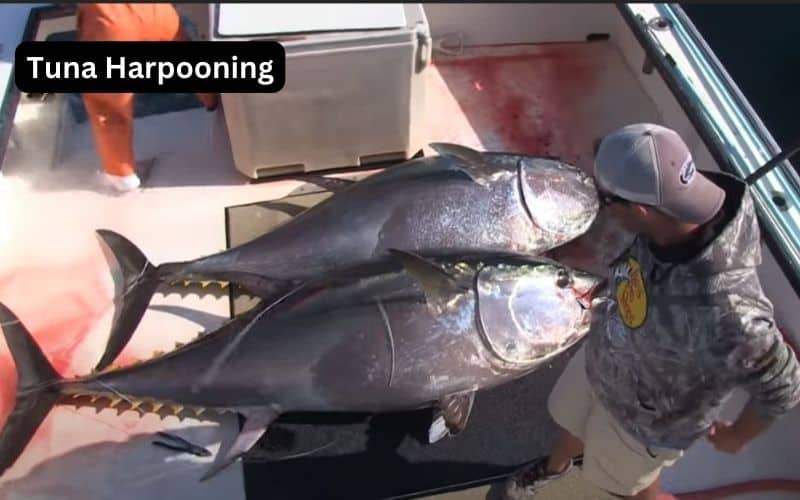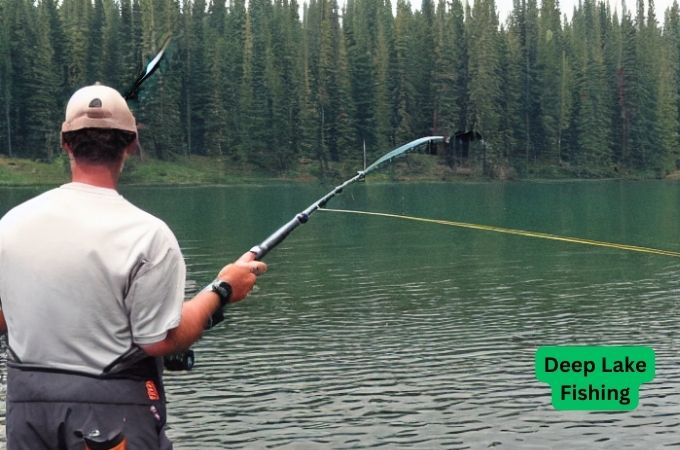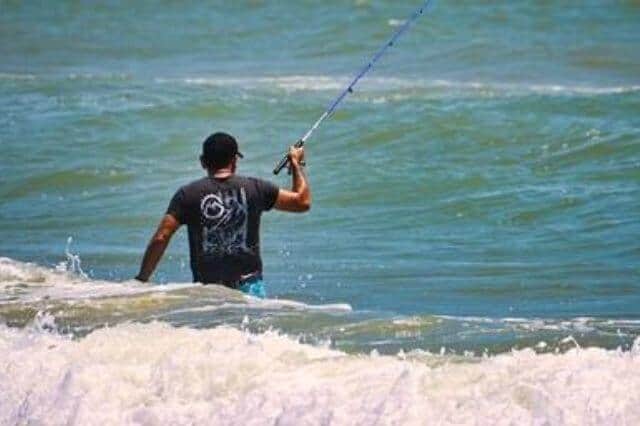Tuna Harpooning: From Ancient Methods to Modern Practices
Today we discuss Tuna Harpooning. For centuries, people have been harvesting tuna using harpoons. This method of fishing is not only efficient, but it also has a long history. In this blog, we will take a look at the history of tuna harpooning, as well as the modern methods used to catch these delicious fish.
The history of tuna harpooning:
The history of tuna harpooning is a long and storied one, dating back to the early days of human civilization. Tuna has long been prized for its flavor and tenderness, and early fishermen relied on simple hand-held spears to catch them.
The modern tuna harpoon was invented in the early 1900s by an Italian named Giovanni Ceccarelli. He developed a hand-held harpoon that could be used to pierce the tough flesh of tuna and other large fish.
As time went on, new technologies were developed to help make the process of tuna harpooning easier and more efficient. Early harpoons were essentially just sharpened sticks with a barbed point, but over time they evolved into more sophisticated tools with metal blades and sturdy handles. Today’s tuna harpoons are finely engineered machines that can be used to quickly dispatch large quantities of fish.
tuna harpooning earlier:
The original tuna harpoon consisted of a long metal or bamboo shaft with a barbed head. The fisherman would use it to stab the fish in the side, causing it to become lodged in the flesh. Then he would pull on the rope attached to the harpoon head, which would cause the shaft to detach from the head, leaving the barb inside the fish. This made it difficult for the fish to escape and made it easier for the fisherman to reel it in.
The process of tuna harpooning:
Commercial tuna fishermen use a harpoon to stab the fish in order to stun it. This is the most humane way to kill a tuna, as it causes less stress and damage to the fish.
The fisherman then attaches a buoy line to the harpooned fish so that it can be tracked and brought on board the boat. The tuna is then pulled up onto the deck where it is cleaned and gutted.
tuna harpooning vs tuna fishing:
Tuna harpooning is a traditional fishing method that uses a harpoon to stab the fish. This is considered an artisanal method, and it’s used to catch small tuna.
Tuna fishing is done with nets, and it’s used to catch larger tuna. It’s an industrial process, and it’s responsible for the majority of tuna catches.
Tuna harpooning needs more skilled activity:
Tuna harpooning is a more skilled activity than tuna fishing. This is because it requires greater accuracy in order to hit the fish accurately and effectively. Tuna fishing can be more forgiving, as fishermen can still haul in a catch even if they don’t hit the fish perfectly.
a modern tuna harpoon work process:
The modern tuna harpoon works by using an explosive charge to propel a harpoon into the fish.
The explosive charge is activated when the fisherman pulls on a line that is attached to the harpoon. This pulls a pin out of a grenade-like device, which then explodes and propels the harpoon forward.
The harpoon is attached to a buoy by a line, and the buoy floats back up to the surface after it has been thrown. This allows the fisherman to pull in the line and retrieve the harpoon.
an Ancient tuna harpoon work process:
an Ancient tuna harpoon likely involved trapping the tuna in a net or using it to stab the fish. Tuna are fast and powerful fish, so fishermen likely had to use a strong and sharp harpoon in order to catch them. Some theories suggest that the ancient tuna harpoon may have involved using a net to trap the fish, while others suggest that it was used to stab the fish directly. Either way, it was likely a very effective tool for catching these large fish.
The 6 challenges of tuna harpooning:
Here we describe The Dangers Involved And The Impact On The Environment of tuna harpooning –
- The dangers involved in tuna harpooning include the risk of being struck by the harpoon, the risk of being pulled into the water by the tuna, and the risk of being pulled under the water by the tuna.
- The impact of tuna harpooning on the environment is significant. It can result in the depletion of tuna populations, as well as the disturbance of the ocean ecosystem.
- Tuna harpooning can also lead to the accidental capture of other marine animals, including dolphins and whales.
- The use of harpoons can also cause significant damage to the ocean floor. 5. Tuna harpooning can also have a negative impact on the local economy, as it can lead to the loss of jobs in the fishing industry.
- Tuna harpooning can also cause social conflict, as it can lead to the displacement of local fishermen.
- Finally, tuna harpooning can have a negative impact on the image of the fishing industry, as it can be seen as a cruel and inhumane practice.
The future of tuna harpooning :
The future of tuna harpooning is being made more sustainable by changing the way that the fish are caught. Instead of using a net to catch the fish, a harpoon is used. This change is being made to reduce the amount of bycatch, which is when other animals are caught in the net along with the tuna. This new method is also said to be more humane, as the fish are not being killed by the net, but by the harpoon.
5 best tuna harpoons:
- Hawaiian sling
- Shimano Lucanus Jig
- Yamashita Tuna Harpoon
- Daiwa Saltiga Tuna Harpoon
- Penn International Tournament Edition Harpoon
5 Tips to choose the right harpoon for tuna:
- The first thing you want to consider is the type of tuna harpoon you need. There are three main types – fixed, detachable, and collapsible. Fixed tuna harpoons have a permanently affixed head while detachable ones have a head that can be easily detached from the shaft for storage or transport. Collapsible tuna harpoons have a head that can be completely removed from the shaft so it can be easily transported and fit into a small space.
- Think about the size of the harpoon. If you plan on using it for the big games, you’ll need a bigger one with a longer blade than if you plan on using it for a smaller game like bonito or mackerel.
- consider the material the harpoon is made out of. Harpoons can be made out of wood, metal, or even plastic but the best ones are usually made out of stainless steel.
- consider the price. Harpoons can range in price from a few dollars to a few hundred dollars depending on the size, material, and brand.
- consider the warranty. Some companies offer lifetime warranties while others only offer limited warranties. Choose a harpoon with a good warranty so you can be sure it will last for many years.
5 Tips for Successfully Harpooning Tuna:
- Use a sharp knife. A dull knife makes it more difficult to pierce the fish.
- Get a good grip on the fish before stabbing it with the knife. This will give you more control and make it less likely that you’ll lose your grip on the fish.
- Aim for the center of the fish. This is where the heart and lungs are located, and piercing them will kill the tuna quickly.
- Apply pressure to the blade once you’ve made contact with the fish in order to ensure a clean stab wound.
- Keep your hand close to the blade as you pull back so you don’t lose your grip on the fish or get cut by the blade.
underwater harpoon fishing:
Underwater Harpoon Fishing is a technique that has been used for centuries in which a spear or harpoon is thrown at fish underwater. The fisherman will use either a hand-thrown harpoon or spearfishing gun to fire the weapon into the fish. The harpoon will have a barb on the end which will lodge itself in the fish, preventing it from escaping. Once attached, the fisherman can then pull the fish towards him to capture it.
Frequently Asked Questions (Faqs’):
Answer:
The purpose of harpooning the tuna is to catch the fish.
The harpoon is a pointed weapon that is thrown or projected, especially with the purpose of wounding or killing an animal. In the context of fishing, a harpoon is a long spear-like instrument that is used to catch large fish, such as tuna.
The harpoon is attached to a long line, and when the tuna bites onto the bait, the fisherman pulls on the line and retracts the harpoon, piercing the fish with the sharp point.
Answer:
A harpoon is a type of weapon that is thrown or projected, typically with a metal spearhead at its front, designed to pierce and kill large fish or marine mammals.
A gaff is a pole with a sharp spike on one end used for landing large fish. It is also used as an instrument for seizing an animal by the horns or ears, as in bullfighting.
Answer:
Yes, it is possible to make a tuna harpoon at home. All you need is a piece of metal tubing or conduit, some wire, and a hacksaw.
First, cut the tubing or conduit so that it is about six feet long.
next, use the hacksaw to cut two notches in one end of the tubing or conduit. These notches will be used to hold the wire in place.
next, use the hacksaw to cut two pieces of wire that are each about two feet long.
next, use pliers to twist one end of each wire around one of the notches in the tubing or conduit.
Finally, use pliers to twist the other end of each wire around your hand. Sixth,

final words:
Though tuna harpooning may seem archaic, it is still a common practice in many parts of the world. The harpoon has changed very little since its early days and is still an effective way to catch these large fish. If you are ever in a place where tuna harpooning is taking place, be sure to watch and learn from those who have been doing it for years. You may just be able to take part in this ancient tradition yourself one day.




